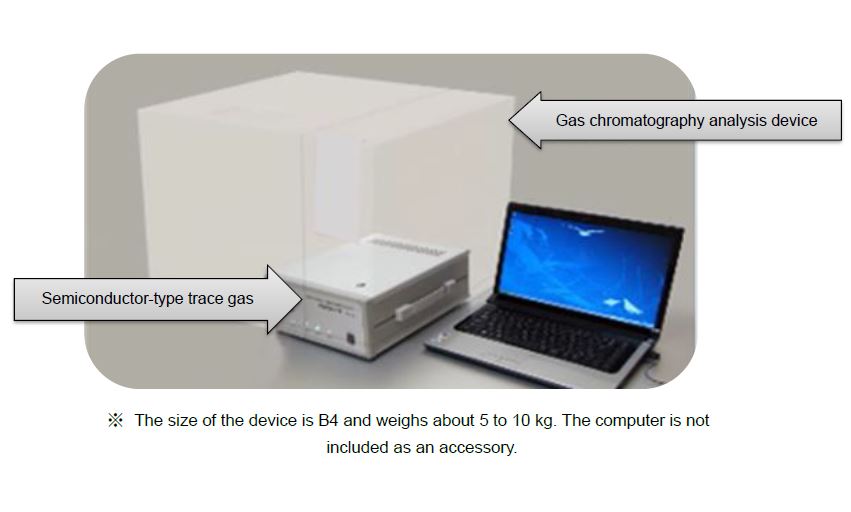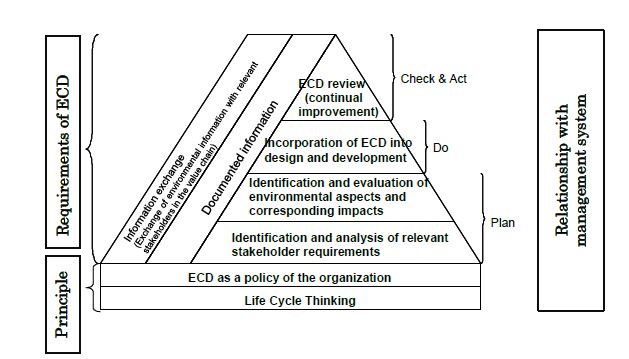- Home
- News Releases
- Back Issues
- December FY2022
- New Establishment and Revision of the Japanese Industrial Standards (JIS) (December 2022)
New Establishment and Revision of the Japanese Industrial Standards (JIS) (December 2022)
- JIS established and revised for matters including methods of measuring trace gas and microscopic liquids and environmentally conscious design for sustainable products and services -
December 20, 2022
The Japanese Industrial Standards (JIS) are a collection of national standards stipulating the criteria for mineral or industrial products, data, and services in Japan, including their quality, performance and test methods. The Ministry of Economy, Trade and Industry (METI) has been revising and newly establishing these standards in response to societal and technological changes. METI publicly introduces the newly established and revised standards that are especially important for the economy and the public once a month in a press release.
1. Outline of the new establishment and revision of the JIS
In December 2022, METI established 7 new standards and revised 29 existing ones. The major ones will be briefly explained here.
Among these standards, 2 established standards and 1 revised standard were submitted by the Japanese Standards Association (JSA), and 12 revised standards were submitted by the Japan Iron and Steel Federation (JISF). Both are Accredited Standards Developing Organizations. The three standards below were established after discussions by the Japanese Industrial Standards Committee (see Appendix 1).
① Establishment of JIS on methods of measuring trace gas
Because devices for measuring trace gas are large and their operation requires specialized knowledge, there have been constraints on where they can be installed and when they can be used. In contrast, semiconductor-type trace gas measuring devices can make simple measurements in short amounts of time because their detectors use semiconductor-type gas sensors, and they are easy to carry because they are small and light. Therefore, it is expected that their application will not be limited to dedicated laboratories and will be expanded to production lines in factories and other locations. However, there has been no unified standard on measurement methods for these measuring devices. Therefore, a new JIS on their measurement methods was established.

② Establishment of JIS on ecodesign (environmentally conscious design (ECD)) for sustainable products and services
In this age, various environmental impacts are considered when bringing products and services into the market. It is necessary to make appropriate designs by considering matters such as waste management, energy conservation, restrictions on the use of specified chemical substances, and the viewpoint of the 3Rs (reduce, reuse, recycle) throughout the entire life cycles of products. This kind of effort is called "environmentally conscious design" or "ecodesign."
This JIS gives guidance on how organizations can incorporate environmentally conscious design into their design and development of their products and services and their management systems, and what kinds of efforts are required. Applying this JIS is expected to contribute to reducing the environmental impact, for example, promoting the sharing of a common understanding of environmentally conscious design and related environmental information throughout value chains of products and services developed in partnership or cooperation with other industries.

③ Establishment of JIS on methods of measuring volumes of microscopic liquids
In manufacturing workplaces, there are times when the volume of a microscopic liquid must be measured accurately. Until now, the general method of measuring them has been to measure the mass using an electronic balance and convert the result into the volume of the droplet depending on the density. However, there are issues with the measurement time and precision.
In contrast, there is a new method of measuring them by taking pictures of droplets falling from an electronic pipette and estimating the volume from the picture using image processing. This makes it possible to streamline the process of measuring droplet volumes and make it more precise. This JIS was established to stipulate the specifications. This is expected to be used in a wide variety of fields such as industrial applications (production lines, equipment installations), chemical analyses, and reagent tests.

2. Outline of the JIS
The JIS stipulate the types and quality of products, data, services, etc., test or assessment methods for ascertaining these types and quality, and standard values that businesses are required to meet. Producers, service providers, product users and consumers, and other stakeholders make use of these standards for purposes such as being able to access quality products and services with peace of mind.
METI has been establishing new standards or revising existing ones for the JIS in response to technological advancements, changes in the social environment and other factors, as necessary.
For more information on the JIS, visit the following websites:
- The Japanese Industrial Standards Committee website (in Japanese)

- METI website for standardization and certification (in Japanese)
3. Past news releases
4. Contact for inquiries about the respective JIS
If you wish to inquire about the details regarding the JIS introduced during this establishment and revision, please contact the division in charge shown in Appendix 1 by email. Please clearly indicate your name, the name of your company (if you send an email as a representative of a company or other entity), and your contact information in the email.
Division in charge
Standards and Conformity Assessment Public Relations Office, Industrial Science and Technology Policy and Environment Bureau
Regarding the standards
International Standardization Division, Industrial Science and Technology Policy and Environment Bureau
International Electrotechnology Standardization Division, Industrial Science and Technology Policy and Environment Bureau